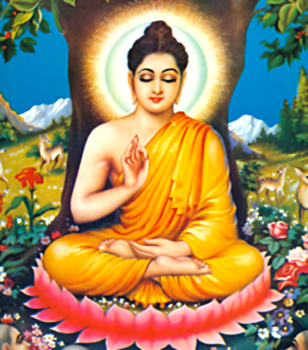 Varieties of scripts that are found from the excavations stand evidences of the society and culture of the ancient India. The inscriptions, though serve as the sources of early history of India, have also their own characteristics value. In early historical India there were two main varieties of scripts namely Brahmi and Kharoshthi. Apart from these there are stone cave inscriptions that are also equally important to provide information related to the Indian history.
Varieties of scripts that are found from the excavations stand evidences of the society and culture of the ancient India. The inscriptions, though serve as the sources of early history of India, have also their own characteristics value. In early historical India there were two main varieties of scripts namely Brahmi and Kharoshthi. Apart from these there are stone cave inscriptions that are also equally important to provide information related to the Indian history.
The Kharoshthi script was limited only to the north-western part of India. The earliest documented use of this script is in the Ashokan edicts and the most recent examples date from the fourth-fifth centuries AD. The use of this script was thus comparatively short-lived. It has been predicted that the origin of this script is possibly rooted in the Aramaic script introduced during the Achaemenid rule of north-western India, and the theory is based on the likeness of many signs having similar phonetic value and the direction of writing from right to left. However, certain signs were bor¬rowed, certain signs derived and certain signs added.
Another script, which is termed as the Brahmi script, has a pan-Indian distribution. It lies at the roots of the major modern Indian scripts and has even influenced some scripts in central Asia, Tibet and south-east Asia. When it first appears in the Ashokan inscriptions it has wide variations in the form of letters, which have been explained as local varieties: Northern and Southern, and the presence of cursive and advanced forms of letters. The general consensus is that the Brahmi script began before Ashoka. Literary evidence of all kinds suggests that the antiquity of the script in India goes back at least to the eighth or seventh century BC. As the tradition of Indian writing continued in the late Harappan stage down to 1300 BC, the time-gap be¬tween the end of the Indus valley civilization and the beginning of early history is less than what used to be thought before. Besides, the Harappans closely interacted with the Neolithic-Chalcolithic com¬munities outside their distribution area. Thus the Indus writing tradition lingered on in perishable medium till the dic¬tates of the new socio-economic contexts of early historic India led to its resurgence in a changed form. The earlier notion that the idea of alphabetic writing was adopted in Brahmi from the Aramaic has academically nothing to recommend, despite its resurgence in a new form after the discovery of some potsherds with fragmentary Brahmi inscriptions in contexts dated c. 450-350 BC at Anuradhapura in Sri Lanka. This discovery only confirms that the archaeological evidence of the Brahmi script is earlier than what was thought and that the many Tamil-Brahmi inscriptions found in south India should be equally early.
Moreover, the earliest recorded instances of historic inscriptions, i.e. the inscriptions of Ashoka, have been found at some places and are the most important sources of Indian history. These inscriptions that are found are non-political, concerned with Ashoka"s concept of morality or "dhamma". The post-Ashokan inscriptions of the late centuries BC and a little later undergo a drastic change and record mostly the gifts of various ordinary class¬es of people towards the construction of Buddhist stupas. The inscriptions of the Jogimara caves, Surguja, Madhya Pradesh, unravel certain historical facts. The Junagadh rock inscription of Rudradaman and the Nasik cave inscriptions of Ushavadata are considered to be distinctive in their own ways. The Rudradaman inscrip¬tion is on the Girnar hill and dated mid-second century AD. The aim was to record the restoration of the lake Sudarsana which was originally con¬structed during the reign of Chandragupta Maurya by his provincial gover¬nor, Pushyagupta of the Vaisya caste and was adorned with a conduit during the reign of Ashoka by his provincial governor "yavana king" Tushaspha. Apart from these, the list of the royal son-in-law"s benevolence, as listed in Nasik cave inscription 10, is most impressive and extended down to the "giving of eight wives to Brahmanas" at the religious centre of Prabhasa in Saurashtra.
The inscriptions dating from the Kushana rule conform to the pattern. A two-line inscription engraved on the pedestal of an image from Mathura records that the image of Lord Buddha which was sculpted by Visasvin was the gift of Raha, the wife of a ploughman, in the fourth month of "hemanta" or winter season of the year 50 of the reign of "son of god", Huva or Huvishka. One of the earliest Tamil-Brahmi inscriptions is found in the rock-cut caves of Arittapatti or Mangulam in Madurai.
Epigraphy is, no doubt, a specialised branch of study concerned with the actual style of the script used, the language, the meaning of technical terms, the analysis of the information contained which entails the story of the period and of its kings, and a host of such other issues. At the same time, inscriptions are also the most direct, and, in many cases, individually identifiable messages from the past. These messages are, in most of the times, used as the evidences of the socio cultural and religious background of that era.






































